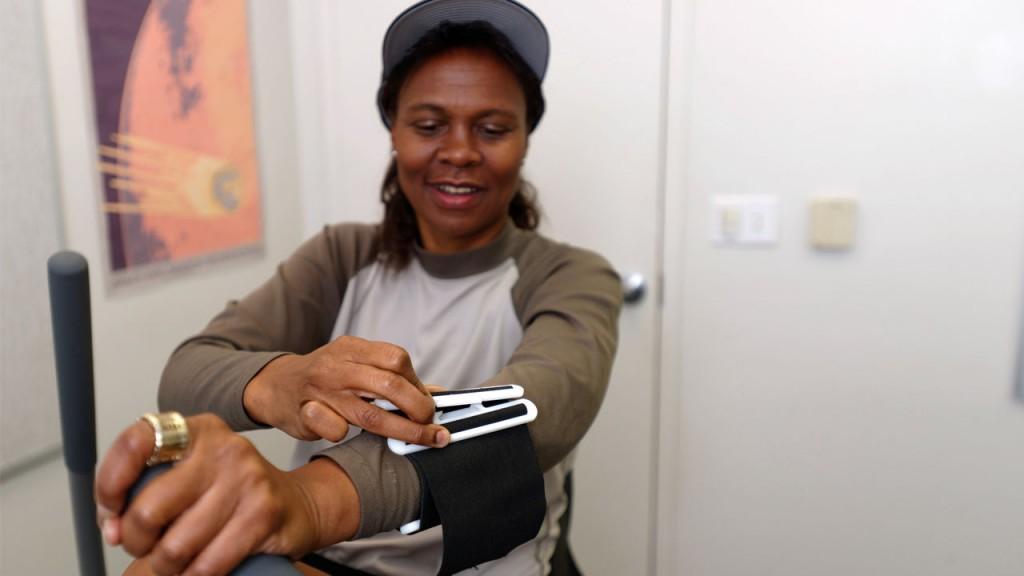Monday, November 24, 2014 will stand out as an historic day in human technological advancement and, specifically, progress in 3D printing technology. That day, astronauts on the International Space Station produced the first object ever to be 3D printed in space. At 4:28 p.m., the ISS’ 3D printer completed the task of producing its own extruder plate.
Next up for the first 3D printer in space: a buckle. That’s right. After the 3D printer completed its own construction with the extruder plate, its next task seems decidedly lacking in glamour. It’s no ordinary buckle, however. It was designed by Yvonne Cagle, astronaut and flight surgeon on previous space missions. The buckle is used with a compression strap that, when tightened, prevents muscle loss and preserves heart health when the body is subject to zero-gravity conditions. The compression belt is a higher-tech version of the elastic wraps used to support injured joints. When paired with the buckle, particularly for use with large muscle groups, the belt is highly effective in preventing atrophy and promoting circulation.
“Without the buckle, it’s just an Ace wrap that isn’t able to generate higher pressures that could protect muscles and nerves,” Cagle said. “The buckle is really the turnkey to lock together the different embodiments and design.”
The production of the compression strap buckle is slated to be one of the first of many in-space 3D printing efforts. The 3D printer, made by a California company called Made In Space, will let astronauts produce replacements for malfunctioning parts rather than, in worst case scenarios, cutting a space mission short and returning to Earth for repairs and maintenance. It gives them a previously unknown autonomy and sense of security to say the least.
Cagle’s buckle isn’t a critical part for the ship, but it will play as significant a role in all space missions by keeping astronauts in good zero-gravity shape.
“I became very intrigued,” explained Cagle, “with what would happen if you could get the G [gravity] suit and actually used it to recondition the body.”
A major challenge in the design process of the buckle was to make it sturdy enough to survive a space flight. Cagle worked closely with Made In Space and Singularity University, the for-profit, high-tech school located in Silicon Valley, to come up with a design for the buckle. It’s strong and it has a footprint small enough to be more than manageable for the ISS’ 3D printer.
NASA hasn’t yet set a specific date for the first space printing of the buckle — it will happen sometime in 2015. The final design will be printed in three different pieces, each of which is about 4 ½” x 1”. Printing the buckle in space isn’t merely a publicity stunt. Because the buckle is lightweight, it could be damaged during a launch. Instead, printing of parts that are not essential to a launch and are also vulnerable to damage can happen after the craft has completed its launch and has stabilized.
When the buckle, which was designed using Autodesk’s Fusion 360, makes its debut in space, Made In Space will have produced its new, second-generation printer, due out by late Spring 2015. The ISS’s current printer uses ABS filament but the follow-up machine will have the capacity to print more materials, including ones mined from an asteroid! Off-world 3D printing using made-in-space materials; it doesn’t get more space age than that!
What do you think about 3D printing in space? Let us know in the Buckle to be 3D Printed in Space forum thread over at 3DPB.com!
Subscribe to Our Email Newsletter
Stay up-to-date on all the latest news from the 3D printing industry and receive information and offers from third party vendors.
You May Also Like
3D Printing Unpeeled: New Arkema Material for HP, Saddle and Macro MEMS
A new Arkema material for MJF is said to reduce costs per part by up to 25% and have an 85% reusability ratio. HP 3D HR PA 12 S has been...
3D Printing News Briefs, January 20, 2024: FDM, LPBF, Underwater 3D Printer, Racing, & More
We’re starting off with a process certification in today’s 3D Printing News Briefs, and then moving on to research about solute trapping, laser powder bed fusion, and then moving on...
3D Printing Webinar and Event Roundup: December 3, 2023
We’ve got plenty of events and webinars coming up for you this week! Quickparts is having a Manufacturing Roadshow, America Makes is holding a Member Town Hall, Stratafest makes two...
Formnext 2023 Day Three: Slam Dunk
I’m high—high on trade show. I’ve met numerous new faces and reconnected with old friends, creating an absolutely wonderful atmosphere. The excitement is palpable over several emerging developments. The high...


































